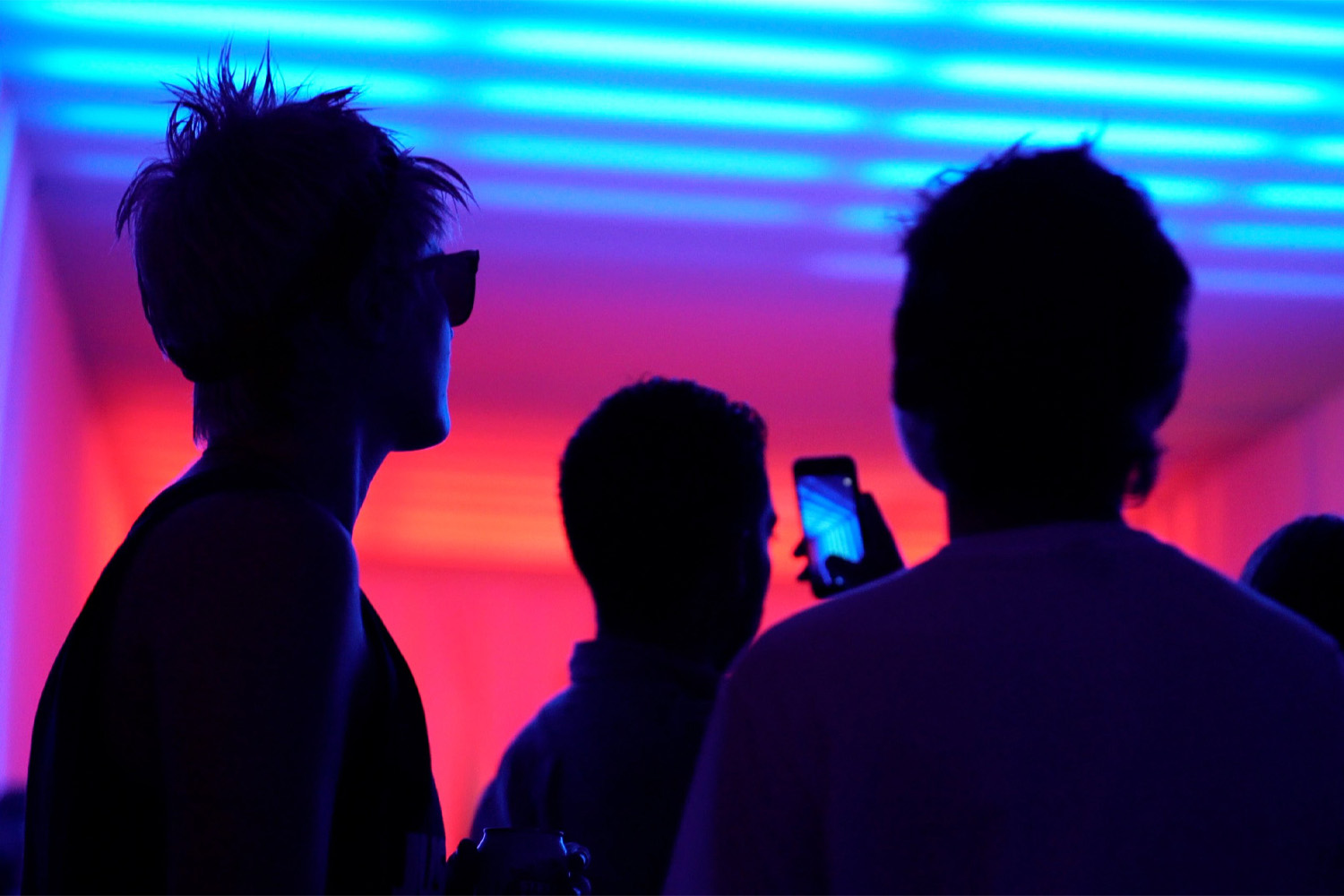Justin Bolognino is a WXO Founding Member and the founder of META, a firm that “creates multisensory live experiences that ignite the human spirit with technology, design, music and storytelling”.
In this transcript of a keynote he gave at DesignUp India in 2017, he explains why experience designers need to consider the “four spheres” of transformative experiences – I, We, It and Its – and make them dance in a sophisticated, jazz-like way.
My parents and previous generations were obsessed with obtaining things — cars, yachts, a big house, a well kempt yard. The “era of things” is officially behind us so, wave goodbye things — say hello to experiences! Millennials and Gen Z have completely changed the commercial landscape. These rapidly rising generations have proven time and again that they prefer experiences over things.
Brands and bands and promoters, and the concert industry, the festival industry, the wellness industry, the travel industry, the lifestyle industry, the retail industry: all have clamored to get into this experience space.
But what I really want to know is: are you experienced?
I’d like to zoom out and look at the nature of what experience is and what we mean when we talk about a transformative experience.
We hear this word all the time, but when you press transformative experience creators, they often can’t articulate where you’re transcending from and where you’re transcending to. It’s almost like there’s no real map for us to understand what transformation really means.
Everyone wants transformative experience. Brands want you to transform so they can get their message into you. Live performers want you to have a transformative experience so you can all feel connected to the performance.
But to design a truly transformative experience, the framework has to be integral or holistic. So let’s look at the four “spheres” that compose a transformative experience.
(I am completely stealing from the work of American philosopher Ken Wilber, who has created essentially the comprehensive or “integral” map of consciousness. He calls them “quadrants,” I’m calling them “spheres”.)
The four spheres are: the I, the We, the It, and the Its.
On the left-hand side you see we’re talking about the subjective. This is the internal.
On the right-hand side we’re talking about the objective, the external.
On top we’re talking about the individual
And on the bottom we’re talking about the collective.
All four of these words arise in every single language on earth. What connects them all together? What’s the screen that these four spheres are projected upon?
Some call it God, some call it Brahman, some call it nothingness. I call it The Beatles, but I also call it something more fundamental – and I am indeed a love extremist — I call it LOVE. Do you come from a place of love or do you come from a place of fear? This is what we have to ask ourselves.
The “I” Sphere
Let’s look at the “I sphere” — everyone’s favorite. Remember this is the internal subjective. This is the psyche, this is what it means to be me. Only I experience the subjective individual self. This is my why, this is what makes me who I am.
I is the realm of truthfulness. Are you being true to yourself? The I is also evolving, and there are many different maps that show the evolution of consciousness — Jean Gebser first explored this in 1949 with his book The Ever-Present Origin. His map goes: archaic, magic, mythic, rational, pluralistic, and integral.
You have all of these different maps of consciousness. Maslow’s hierarchy, which is another example of consciousness evolving into more inclusive, compassionate and empathetic stages, and no matter what race, creed, skin color, ethnicity religion you come from, we all have to pass through the same stages of development.
If we’re able to see this map and understand how these stages interplay with one another, we have a much more inclusive understanding of how reality works. I, what it means to be me, the perspective, the lens, the filter through which I experience reality, is evolving or can be evolving, should we choose.
It’s very important to talk about the difference between stages and a state.
A state, which is what we are always trying to go for when we create experiences, is fleeting. A state is temporary. A state does not last.
A stage is more like your center of gravity, it’s more fixed — it’s dynamic. This is your filter, your viewpoint through which you experience a state. Let’s say you have a near-death experience because you’re in the third lane in India, and you experience this transcendent oneness — the stage you dwell within will interpret that experience. So if all I’m reading is the Bible, I will interpret that as seeing God or as seeing Jesus. If all I’m doing is watching Fox News, I’ll probably end up voting for Trump.
So remember: state temporary, stage filter. This is very important because ultimately we’re trying to create states at experiences and the ultimate state is the “flow state” — the state where you feel connected, where you’re not even thinking — it’s effortless. The flow state is what we’re all striving for when we create an experience.
The “It” Sphere
We’ve covered the internal subjective, now we’re going to cover the external objective, and this is the It realm. This is now physiology. This is your behavior. This is how you act as opposed to how you feel.
Again, It is externality. It is about your performance and about truth. If I subjective was about what it means to be truthful — are you true to yourself? — It is: is it objectively true? Can we use logic to prove its truth? Can science point to it as true?
This is the result of what happens when we focus too much on one sphere, namely the It sphere. This is all about externality: it’s all about what you look like, what kind of car you drive, who you’re married to. The point is that we get ourselves into trouble when we focus too much on one sphere. If all we focus on is the It sphere, then we get into a culture where this becomes the most influential sphere of being, and I think that there has to be something more than this. That more is in getting all four of these spheres to dance together.
The “Its” Sphere
Now we have the Its sphere: this is the external collective. We’re talking about sociology and more importantly we’re talking about systems.
As technology and artistry and design all confluence together, Its becomes more and more important to understand how the interplay — the Internet of things — works together. Just like I and It, Its also evolves. It evolves externally and into ever more complex and more subtle systems.
This sphere is all about function. It’s about economics, sociology, the interplay of media and communication. It becomes exceedingly important to be able to understand systems when creating an experience and where we get ourselves into trouble is if we’re just focused on this sphere over all others.Then you get that tech-for-the-sake-of-tech where there’s no emotional resonance – there’s not that internal sphere, there’s only this thing or this experience and it just doesn’t grab your heart like an emotionally balanced experience would.
The “We” Sphere
Last but certainly not least, we have We. This is the sphere of culture. We is what it means to be part of the collective. This is about justness and mutuality and understanding, this is about our tribe, our religion, our family, and our rightness. This is what it means to be part of a collective and just like all the other spheres, the We cultural sphere evolves – and it evolves in the same stages that the I evolves in.
The website Scaled In Miles explores Miles Davis’s music from the fifties through to the nineties, and where I come from there are few better examples of how culture evolves through creativity and artistry than jazz.
Now why am I talking about jazz? Because jazz is the quintessential metaphor for how to you get all of these spheres to dance. People ask “well, do you want to balance all the spheres?” and I don’t think balance is really the answer, because balance is kind of boring and stale. I think the way to look at this is, you bring your practice to the table. You know your scales, you know your modes, you know your key structures, and then when the moment comes, when you get to that experience, you have to be able to throw all that stuff out the window and improvise.
Rather than a balance, I’d like you to think about getting all these spheres to dance, creating a garden or creating a framework that allows all these spheres to inter play. There’s this really cool idea of a “Holon”. A Holon is a whole part or a part whole. There are no wholes and there are no parts, only Holons. For instance, each sphere is a whole sphere in and of itself, but it’s simultaneously part of the greater spheres. Then that’s a part of a greater whole, and this goes all the way up to the universal level and all the way down to the nano-level and even smaller than strings — we have Holons.
I want to bring this to life through a quick video of one of my favorite jazz trios, the Vijay Iyer Trio. Each member of this trio stands as an individual, yet is part of a greater collective: when they’re improvising they are playing off this theme together as a greater whole, but still individuals. So that dance, that tension and release that comes when you allow all the spheres to integrate together, is the stuff of magic and it’s the stuff of transformative experiences.
At META, our KPI is the looks on people’s faces. We are here to create joy. We are here to create that sense of connection. The technology isn’t the goal, the emotional resonance is our goal and so that’s always what we’re going after. We’re always looking to balance those spheres together.
To get more insights from experts in the Experience Economy – and to be the first to know about our membership programme, events and more – apply to join the WXO community now.
















